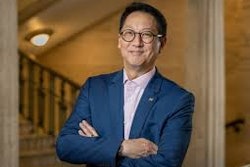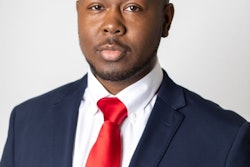UNC-Chapel Hill Opens Up Records About Ties to Slavery
CHAPEL HILL, N.C.
In the early decades of the nation’s oldest public university, students at the University of North Carolina had servants who kindled fires in their rooms and cut wood to fuel their stoves.
And at the school that’s so proud of its history, archivists have uncovered and collected — and are now displaying publicly — evidence of what’s been assumed for generations: that those servants were enslaved Blacks.
“I think it’s important for us to know our own history and to be honest about it,” says UNC chancellor Dr. James Moeser. “This university was built by enslaved and free Blacks. We need to be candid about that, acknowledge their contributions.”
The University of North Carolina, chartered in 1789, is one of a growing number of institutions of higher learning, banks and financial firms that have taken steps to research and recognize their historic ties to the slave trade.
North Carolina archivists, searching through records as part of a project on the university’s first 100 years, uncovered records confirming that slaves helped construct several buildings on campus. Other records showed that both faculty and university board members owned enslaved Blacks.
The research is now on display as part of an on-campus exhibit — “Slavery and the Making of the University: Celebrating Our Unsung Heroes, Bond and Free” — that includes photographs, letters, bills of sale for slaves and other documents. In one letter, the wife of the school’s first law professor wrote her husband that university President David Lowry Swain wanted to hire “Harry” for work. She pledged that she would “hire Harry out whenever I can.”
Last April, the faculty senate at the University of Alabama apologized to the descendants of slaves who were owned by faculty members or who worked on campus in the years before the Civil War. The school also erected a marker on campus near the graves of two Black slaves.
And at Brown University in Rhode Island, a committee is examining the school’s historic ties to the slave trade and recommending whether and how the college should take responsibility. A report on the findings is due by the end of the fall semester.
“We clearly do live in a society that has a persistent pattern of racial disparity, and I think most people would agree that that has something to do with our history,” says Dr. James T. Campbell, a history professor at Brown and the chairman of the committee. “If you care about that pattern of disparity, then it seems to me one of the things that is incumbent on you is to try to find out how we got here.”
Just how many schools have ties to the slave trade remains unknown, since so much information has been concealed, says Harvard law professor Charles J. Ogletree Jr. But he says those found to have had links to slavery should pay reparations.
In the business world, some banks and financial services firms have conducted similar investigations, often to comply with demands from local governments. In some cases, the corporations have made financial donations after uncovering their ties to the slave trade.
Charlotte, N.C.-based Wachovia Corp. committed an undisclosed sum to support Black history education a few days after announcing that two of its predecessor banks owned slaves. New York-based JPMorgan Chase & Co. gave $5 million to support college scholarships for Black students in Louisiana, where two of its predecessor banks received thousands of slaves as collateral.
At North Carolina, the university has made several efforts to recognize the school’s links to slavery. A class is offered on the history of Blacks at the school. A monument, to be dedicated next month, was installed last May that honors enslaved and free Blacks who helped build the school.
— Associated Press
© Copyright 2005 by DiverseEducation.com


















